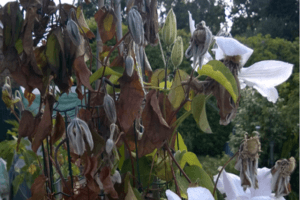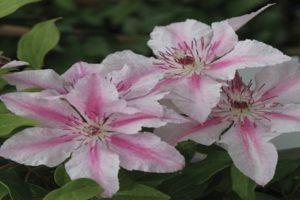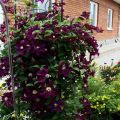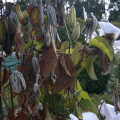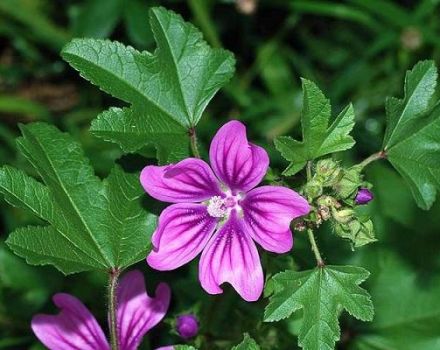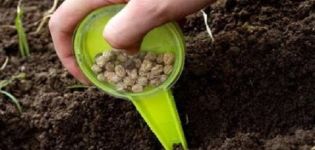Features of planting and caring for clematis burning in the open field
Not only flower beds and various ornamental shrubs are suitable for decorating the site. Plants that can grow on vertical surfaces, which include building walls, fences and columns, are very popular. Clematis, called "burning", is perfect for ennobling such objects. Why it is so appreciated by experienced gardeners, and how it is bred, we will figure it out below.
Description of the appearance of burning clematis
Burning clematis refers to small-flowered shrub vines, capable of braiding a site 4 meters wide and 5 meters high with their shoots. In the process of growing, the shoots of the vines independently braid nearby objects, turning nondescript-looking structures into a green carpet, on which hundreds of beautiful buds bloom.
Clematis leaves are small in size, painted in a rich green. Their shape is oval, slightly pointed at the top. One vine is capable of forming up to 400 buds that resemble stars when opened. The buds are small, when opened, their diameter does not exceed 3 centimeters.
Planting a burning white clematis: necessary conditions
Clematis is not a capricious plant that does not require much effort from the gardener when planting and growing. However, in order for a white cascade of miniature buds to bloom on the wall of a building or support post, some planting rules should be followed, which are listed below:
- start planting in the first month of spring or fall;
- the landing site should not be blown by the wind, since strong gusts break fragile shoots, damaging the buds;
- a hole 60 centimeters wide and the same depth is dug under the seedling.
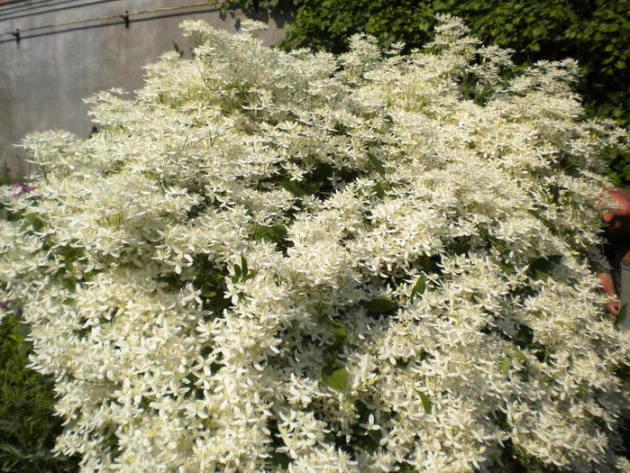
Basic rules of care
When breeding clematis burning, the gardener must follow the basic rules of care, which are:
- correct lighting;
- choosing soil for planting;
- correct and timely watering;
- fertilizing the site;
- tying up;
- bush formation;
- preparing the plant for wintering.
Note! Each of the above points has a great influence on the harmonious growth and formation of clematis. Do not neglect them.

Lighting
Lighting plays an important role in plant growth.Clematis loves a lot of sunlight, which should be considered when choosing a landing site. However, there is one nuance that novice gardeners need to know. It consists in the fact that during planting, excess sunlight can damage the seedling. Therefore, until the moment when he takes root in a new place and gets stronger, the landing site is shaded.
In hot climates, it is worth choosing areas with a little shade. This will prevent the soil from overheating during the day and the plant will grow to its full height.
The soil
Light soils with neutral alkalinity are suitable for planting plants in open ground. These include sandy loam and loamy soils. During the growth of the vines, the ground around it must be loosened, while removing weeds and other shoots, which take away the nutrients necessary for the proper development of clematis. It is advisable to mulch the ground around the seedling.
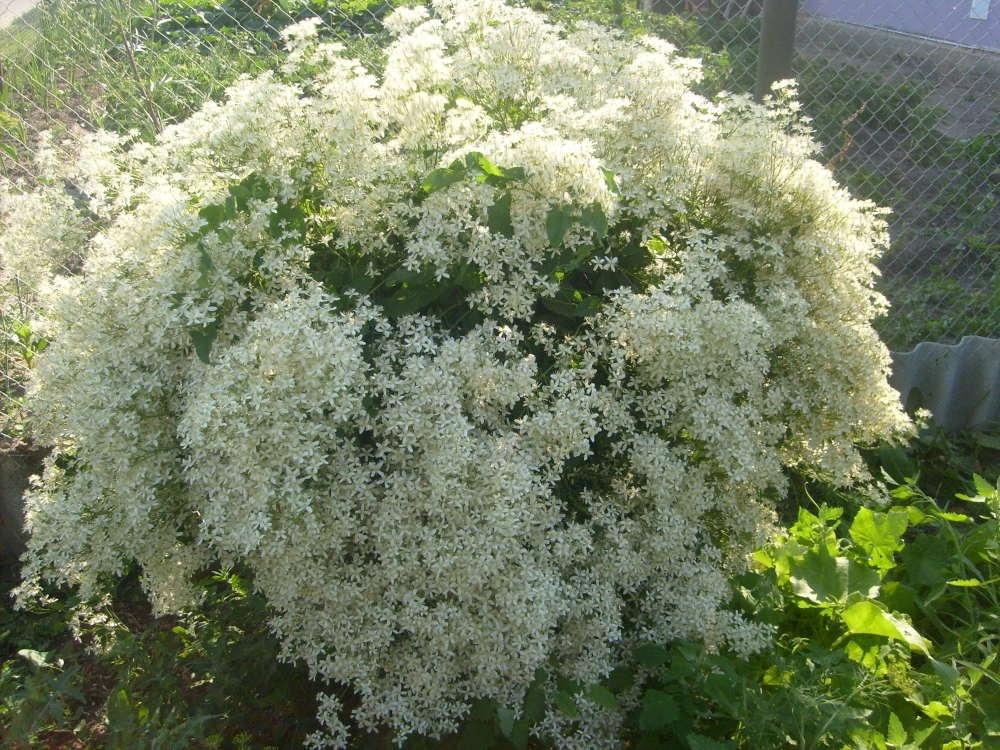
Watering
Watering burning clematis has several features that you need to know and take into account in the breeding process:
- it is necessary to maintain a balance while moisturizing the soil;
- the plant likes abundant watering, but with excessive moisture, the roots begin to rot, and the vine dies;
- pouring water, preferably as close to the root as possible, without moistening the stem with leaves;
- in the case when clematis grows next to the roof of the building, and water flows onto it - monitor the soil moisture. With an excessive amount of moisture, the plant will quickly die. To fix the problem, sprinkle the soil around the seedling with ash or other moisture-absorbing substance;
- young vines consume more liquid than already formed plants.

Fertilizing and feeding
Top dressing and fertilization of clematis are performed according to the following algorithm:
- during the formation of the liana, either organic or mineral fertilizers are introduced into the soil every month;
- don't give everything at once. In one month, organic-based feeding, in the other - mineral fertilizers;
- feed the plant after irrigation. This will distribute fertilizers faster and better assimilate.
Note! In hot regions, annual plants are planted around the planting site to protect the root system from overheating.
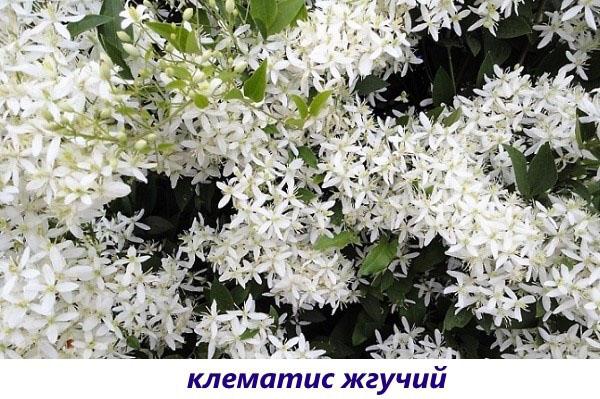
Tying
Despite the fact that clematis yellow belongs to bush plants, it practically does not grow without support and garter. The support is not difficult to make with your own hands, making a frame of any shape and size. To make it easier for the plant to grow, the cells of the frame should be no more than 1.5 centimeters in width. On such structures, the vine takes root best.
The decorative support can also be ordered in the store, where it will be made by specialists, taking into account all your requirements.
Pruning and shaping the bush
Pruning and shaping the bush are mandatory procedures on which the appearance of clematis will depend. They are performed as follows:
- the first pruning is done at planting to stimulate growth and give the correct growth vector;
- young shoots that form on the liana must also be pinched;
- to increase the duration of clematis flowering, a group of lateral shoots that do not affect the general appearance of the bush is partially pruned;
- in the fall, in preparation for wintering, all the shoots are cut off, since they die off for the winter, and only the root remains alive.

Preparation and shelter for the winter
Special preparation for the winter season is not required, since the root is frost-resistant, and even endures severe cold snaps, and the aboveground part dies off. In the spring, the root will again give young shoots, and your garden will take on its former unique look, which all neighbors will envy.
Reproduction of clematis burning
The plant reproduces in the following ways:
- using seeds;
- dividing the bush;
- layering;
- cuttings.
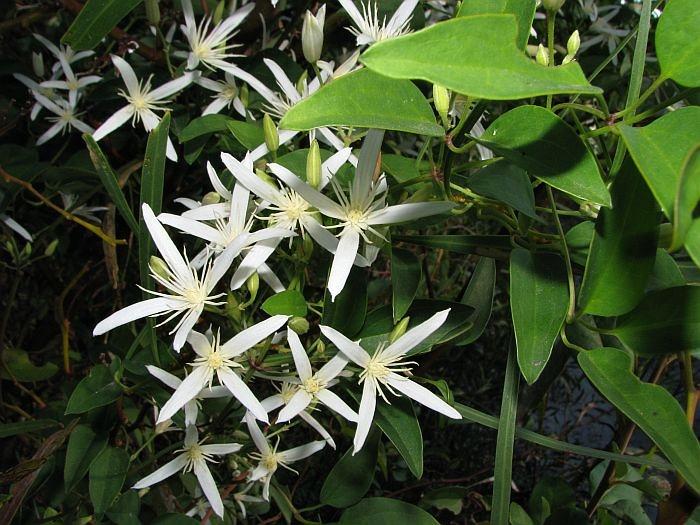
Let's take a closer look at each of them.
Seed propagation
Clematis, or as it is called in another way "clematis", reproduces well with the help of seeds. There are two planting methods:
- in open ground;
- to the greenhouse.
Seeds are planted in open ground in early April. In greenhouse conditions, sowing is carried out in November. For planting, make a special container, which is filled with a mixture of sand and earth in a ratio of 50 to 50. The distance between the seeds is 6 centimeters. From above, the seeds are sprinkled with a thin layer of peat, its thickness should not exceed 2-3 centimeters.
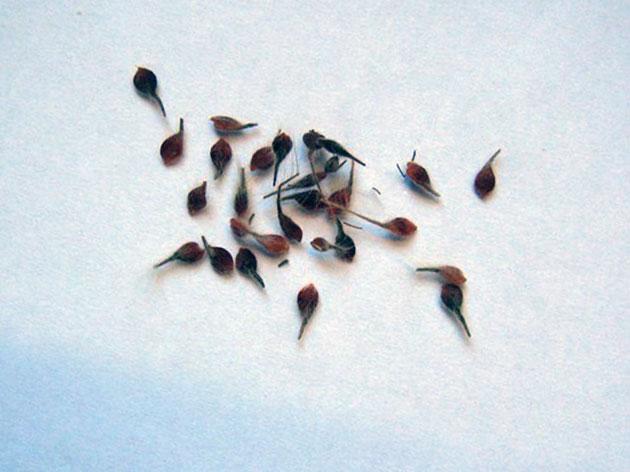
Dividing the bush
The simplest breeding process for clematis, for the implementation of which it is necessary:
- carefully dig up the old bush without damaging the roots;
- divide the bush into parts, after which they are buried again.
Layers
Lateral shoots are called layering, with the help of which new bushes are formed. For this, special grooves are dug into which the shoots are laid. For reliability, they are pressed to the ground with special brackets and covered with earth. The groove is about ten centimeters deep. After 1 year, the shoots are separated from the main bush and planted as an independent plant.
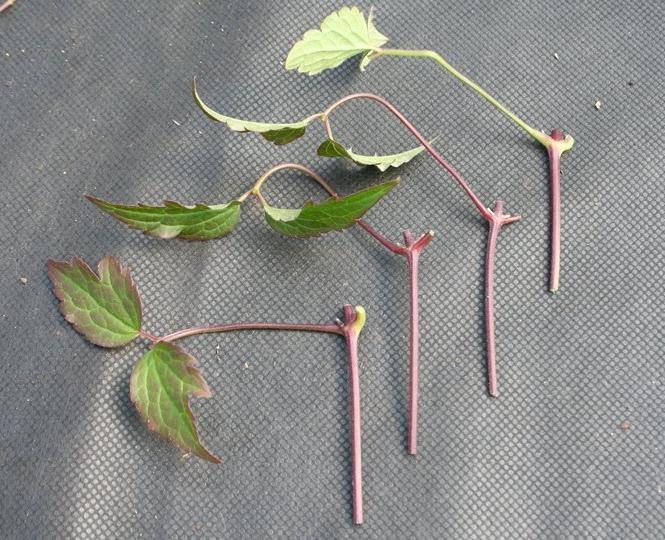
Cuttings
To breed clematis with cuttings, the gardener needs the following:
- water the cuttings with special growth stimulants so that they quickly take root on the site;
- monitor the temperature of the soil - it should not fall below 18 about;
- protect the cuttings from excessive exposure to sunlight until they take root in a new place.
Possible problems during cultivation
When breeding clematis, the following problems may arise:
- liana stops growing after reaching a certain mark;
- flowers begin to become smaller and smaller with each season;
- drying tops.

Stagnant growth
The problem arises in the first year of life, when the vine literally stops its development, at around 20-30 centimeters. The reason for this behavior lies in the violation of the plant care regime by the gardener. Reinforced groundbait with nitrogen-containing fertilizers and abundant watering will help to correct the situation.
Chopping flowers
This problem is characteristic of old bushes with large flowers (for example, the White Cloud variety), the age of which reaches 5 years and more.
This is due to the fact that the roots grow deep into the soil, and watering does not provide the plant with a sufficient portion of moisture, weakening it.
To fix the problem, dig a few plastic bottles with a cut-off bottom, neck down, into the ground, at a distance of 50 centimeters from the base of the bush. Water is poured into them, thereby facilitating its deeper penetration into the soil.
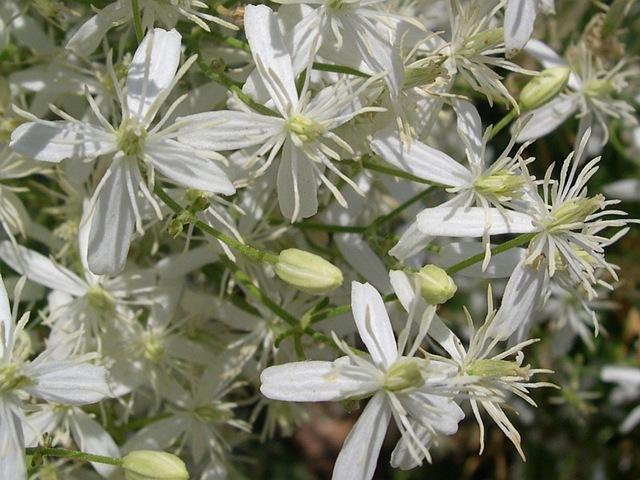
Drying tops
The cause of the problem is insufficient moisture. Similar symptoms occur when aphids appear on the vine. The first problem is eliminated by increased watering, the second - by spraying with special means from parasites.
Pests and diseases
When breeding clematis, there is a risk that the bush will get sick with the following diseases:
- gray rot;
- powdery mildew;
- rust;
- wilt.
When the first symptoms of infection occur, the damaged parts of the vine are destroyed, and the bush is treated with special medicines.

Pests are deterred by planting plants such as marigolds or calendula next to the vine. They have a specific smell that repels harmful parasites, and at the same time they look good against the general background.
The use of clematis pungent in landscape design
In landscape design, they are used for decoration:
- arbors;
- walls of buildings;
- fences;
- trees;
- balconies;
- decorative screens.
Combines well with other varieties, ennobling any garden area.
